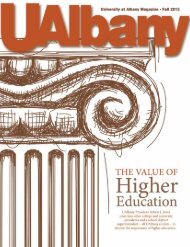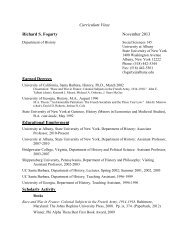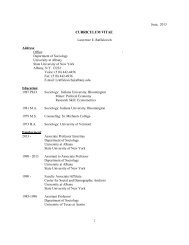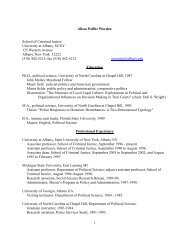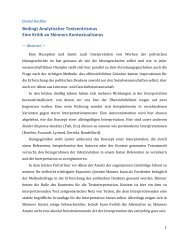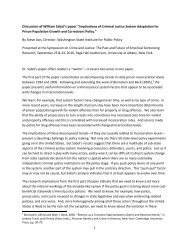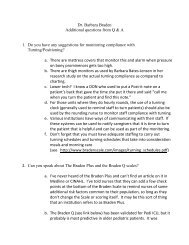Walking Corpses & Conscious Plants: Possibilist Ecologies in ...
Walking Corpses & Conscious Plants: Possibilist Ecologies in ...
Walking Corpses & Conscious Plants: Possibilist Ecologies in ...
Create successful ePaper yourself
Turn your PDF publications into a flip-book with our unique Google optimized e-Paper software.
B<strong>in</strong>gham 61<br />
order” (200). The premise for constant exposure to the grotesque <strong>in</strong> this case is an<br />
<strong>in</strong>ability to escape decompos<strong>in</strong>g corpses with a ceaseless compunction to consume the<br />
liv<strong>in</strong>g. Understandably, there is an <strong>in</strong>herent social commentary <strong>in</strong> this pervasive<br />
condition.<br />
As we learn <strong>in</strong> chapter three, “Safety Beh<strong>in</strong>d Bars,” no one is exempt from this<br />
transformation. Regardless of cause of death, any and all <strong>in</strong>dividuals will reanimate<br />
unless their bra<strong>in</strong>s have been destroyed. Therefore cop<strong>in</strong>g with the loss of a loved one<br />
can be even more difficult than it would be normally because expiration must be<br />
repeated. By complicat<strong>in</strong>g the expected trajectory of the body, Kirkman has also<br />
transformed it <strong>in</strong>to someth<strong>in</strong>g wholly different from previous associations of it as<br />
representative of an <strong>in</strong>dividual and organism. This is true for the characters with<strong>in</strong> The<br />
<strong>Walk<strong>in</strong>g</strong> Dead like Shane, whose existence was written before this condition existed.<br />
Accord<strong>in</strong>gly, readers cope with this <strong>in</strong>version of normalcy <strong>in</strong> the same time as characters<br />
like Rick for example. The metamorphosis makes the body <strong>in</strong>to a morbid agent of<br />
perpetual destruction. Rather than be<strong>in</strong>g categorized by personality or behavior, the<br />
transformation follow<strong>in</strong>g death erases all earlier sense of identity. Dist<strong>in</strong>ction between<br />
bodies of these walkers is only possible through the recognition or differentiation of<br />
physical features. Cavarero categorizes a similar type of violent transformation: “Horror<br />
has to do precisely with the kill<strong>in</strong>g of uniqueness, <strong>in</strong> other words it consists <strong>in</strong> an attack<br />
on the ontological material that, transform<strong>in</strong>g unique be<strong>in</strong>gs <strong>in</strong>to a mass of superfluous<br />
be<strong>in</strong>gs whose murder is as impersonal as the squash<strong>in</strong>g of a gnat” (43). This means no<br />
trace of former relationships rema<strong>in</strong>s known to the transformed bodies which were once<br />
familiar to the liv<strong>in</strong>g. Once metamorphosed, all bodies simply become a threat. Though



